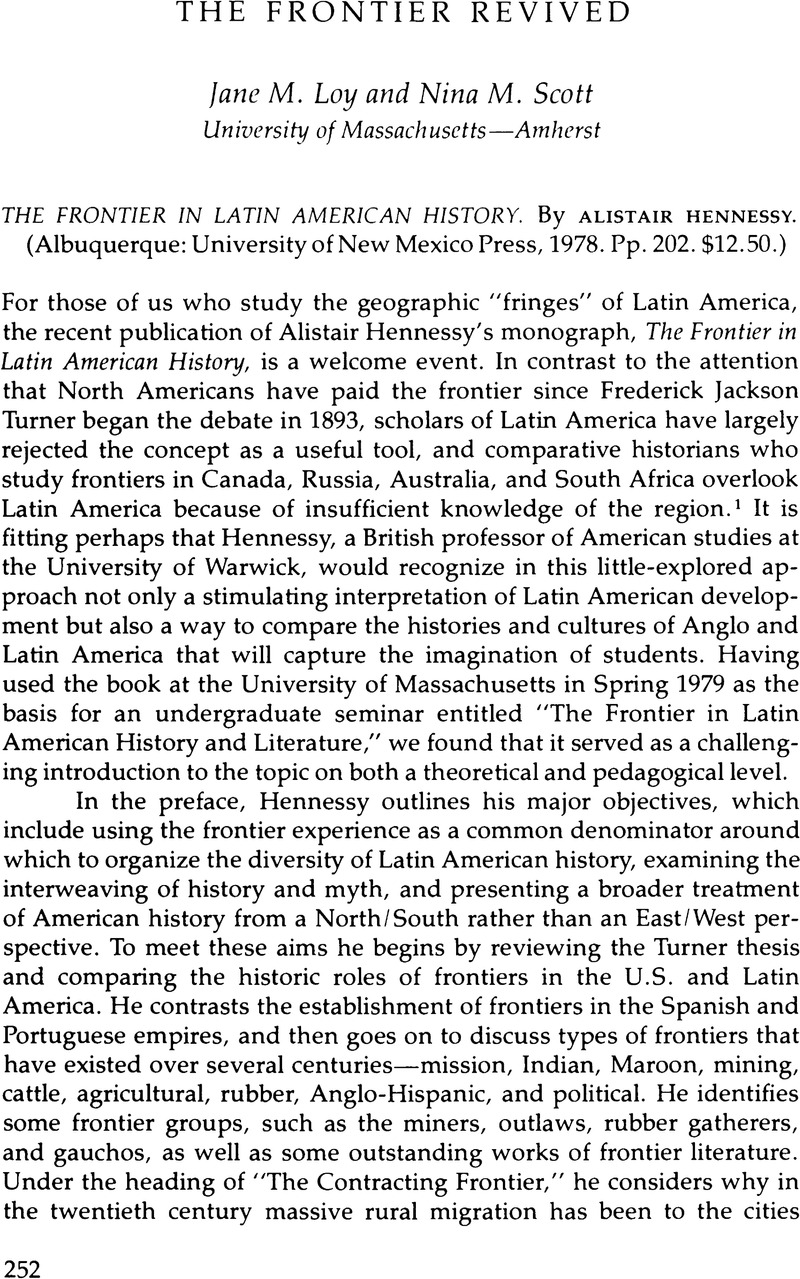No CrossRef data available.
Article contents
The Frontier Revived
Review products
Published online by Cambridge University Press: 24 October 2022
Abstract

- Type
- Review Essays
- Information
- Copyright
- Copyright © 1981 by the University of Texas Press
References
Notes
1. See, for example, Dietrick Gerhard, “The Frontier in Comparative View,” Comparative Studies in Society and History (1959), pp. 205–29. Marvin Mikesell in “Comparative Studies in Frontier History,” Annals of the Association of American Geographers 50 (1960), pp. 62–74 and Ray Allen Billington, The American Frontier Thesis: Attack and Defense (Washington, D.C.: AHA Pamphlets, 1971) include Latin America in their discussions but in a peripheral manner.
2. Richard M. Morse, The Bandeirantes (New York, 1965), p. 30.
3. Geographers were the first to develop the idea of “permanent” frontiers. See Isaiah Bowman, The Pioneer Fringe (New York, 1931), Raye Platt, “Opportunities for Agricultural Colonization in the Eastern Border Valleys of the Andes,” in Pioneer Settlement, American Geographical Society Special Pub. No. 14 (New York, 1932) and Dieter Brunnschweiler, The Llanos Frontier of Colombia (East Lansing, 1972). For a historian's approach see Jane M. Loy, “The Llanos in Colombian History: Some Implications of a Static Frontier,” University of Massachusetts, International Area Studies Programs (1979), Occasional Papers Series no. 2.
4. See especially Carpentier's Ecué-yamba-o and El reino de este mundo as well as Asturias's Hombres de maíz.
5. Regeneration through Violence. The Mythology of the American Frontier, 1600–1860. (Middletown, Conn., 1973).


